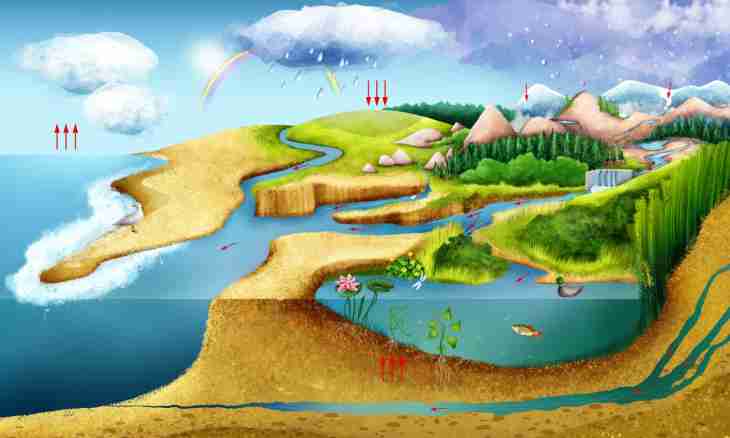Carbon at the heart of life on Earth. Each molecule of any living organism contains carbon in the structure. In the biosphere of Earth there is a constant migration of carbon from one part in another. Circulation of carbon in the nature is inseparably linked with circulation of all bioorganic substances.
Circulation of carbon in the biosphere
Plants absorb carbon from the atmosphere in the course of photosynthesis. Green plants of the planet in the course of photosynthesis are annually taken from the atmosphere to 300 billion t of carbon dioxide. Animals use a plant then they allocate it in the form of carbon dioxide in the course of breath. The died-off plants and animals are exposed to decomposition by microorganisms. As a result of process of a peregnivaniye, carbon is oxidized to carbon dioxide and gets to the atmosphere.
In the World Ocean the process of circulation of carbon is more difficult as there is a dependence on intake of oxygen in the top water layers. In the World Ocean the circulation of mass of carbon is almost twice less, than on the land. On a water surface carbon dioxide is dissolved and used by phytoplankton for photosynthesis. Phytoplankton – the beginning of a food chain in the ocean. After eating of phytoplankton the animals emit carbon in the course of breath and give him up a food chain.
The died plankton settles on an ocean floor. Thanks to this process the bed of the World Ocean comprises large reserves of carbon. Cold currents in the ocean transfer carbon to a water surface. Heating up, water releases the carbon dissolved in it. In the form of carbon dioxide carbon gets to the atmosphere. In the nature, between a lithosphere and the hydrosphere, there is also a constant migration of carbon. The greatest emission of this element happens in the form of carbonate and organic compounds to sushi to the ocean. From the World Ocean on the Earth's surface, carbon arrives in smaller quantities in the form of carbon dioxide.
Carbon dioxide of the atmosphere and the hydrosphere exchanges and updated by living organisms in 395 years.
Withdrawal of carbon from circulation
Part of carbon is taken from circulation by formation of organic and inorganic compounds. Carry a humus, peat and fossil fuel to organic compounds.
Oil, natural gas, coal belongs to fossil fuel.
The calcium carbonate belongs to inorganic compounds. Formation of deposits of a carbonate of calcium leads to reduction of a reserve of the carbon available to photosynthesizing organisms. But finally a part of this carbon returns thanks to aeration of rocks and activity of microorganisms.
Influence of a carbon cycle on climate
Carbon dioxide has greenhouse properties and can have long-term impact on climate of the planet. For the last century the contents in the atmosphere of carbon dioxide changed from 0.27 to 0.33%. Increase in concentration of carbon in the atmosphere is connected with many reasons. In the atmosphere the intensive deforestation and combustion of fossil fuel had the strongest impact on increase in concentration of carbon dioxide.

